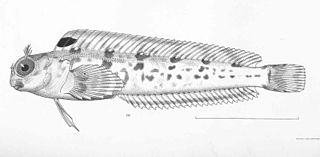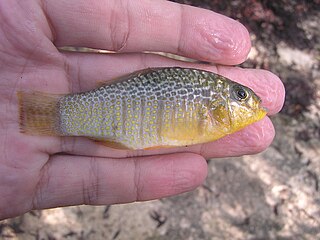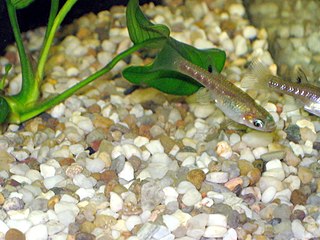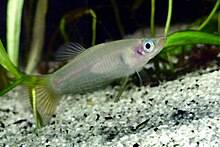
George Albert Boulenger was a Belgian-British zoologist who described and gave scientific names to over 2,000 new animal species, chiefly fish, reptiles, and amphibians. Boulenger was also an active botanist during the last 30 years of his life, especially in the study of roses.

The bobo mullet, is a species of ray-finned fish of the mullet family Mugilidae. It is the only species in the genus Joturus, one of 17 mullet genera containing altogether about 80 species of ray-finned fish. It occurs in rivers, including brackish waters, in much of the Gulf of Mexico basin from Mexico as far south as Panama and the Caribbean coast of Colombia, as well as the West Indies and the United States state of Florida. The specific name honours the Cuban lexicographer and geographer Esteban Pichardo (1799-1879).
George Sprague Myers was an American ichthyologist who spent most of his career at Stanford University. He served as the editor of Stanford Ichthyological Bulletin as well as president of the American Society of Ichthyologists and Herpetologists. Myers was also head of the Division of Fishes at the United States National Museum, and held a position as an ichthyologist for the United States Fish and Wildlife Service. He was also an advisor in fisheries and ichthyology to the Brazilian Government.
Campellolebias is a genus of killifish in the family Rivulidae from southeast Brazil. They are restricted to seasonal blackwater pools in forests in coastal parts of Santa Catarina and São Paulo states.
Maurice Kottelat is a Swiss ichthyologist specializing in Eurasian freshwater fishes.
Enteromius ansorgii is a species of ray-finned fish in the genus Enteromius. It is endemic to Angola.
Enteromius evansi is a species of ray-finned fish in the genus Enteromius from the Catumbela and Kwanza river systems in Angola.

Parahypsos piersoni is a species of combtooth blenny found in coral reefs in the eastern Pacific ocean, from Costa Rica to Peru. The specific name honours C.J. Pierson, who was a member of the expedition to Panama on which the type was collected.
Rhabdoblennius is a genus of combtooth blennies found in the Pacific Ocean, mostly in the western Pacific. The name of this genus is derived from the Greek word rhabdos meaning "stick" or "rod" and blennius meaning "mucus", referring to the absence of scales on the body of blennies.
Mccoskerichthys sandae, the tufted blenny, is a species of chaenopsid blenny, found around Costa Rica and Panama, in the eastern central Pacific ocean. It can reach a maximum length of 8 centimetres (3.1 in) TL. This species feeds primarily on small crustaceans including copepods, amphipods, and ostracods. It is the only known member of its genus. The generic name honours the zoologist John E. McCosker, who discovered this blenny and who assisted in the collection of the type and the specific name honours his then wife, Sandra.
The signal triplefin is a species of triplefin blenny in the genus Lepidonectes. It was described by William Albert Bussing in 1991 and he gave it a specific name which honours the American ichthyologist Clark Hubbs (1921–2008). This species occurs in the eastern Pacific Ocean where it is found off Costa Rica and Panama. The signal triplefin is found on rocky shores where it feeds on very small invertebrates and algae.

Cubanichthys is a small genus of pupfishes endemic to the Caribbean Islands of Cuba and Jamaica. The name of this genus is a compound of Cuba, where the genus was thought to be endemic until C. pengellyi was placed in the genus, and the Greek word for fish, ichthys.

Floridichthys is a genus of pupfishes native to the southeastern United States, Mexico and northern Central America. The name of this genus is a compound of Florida and the Greek for "fish", ichthys. The ichthyologist Carl Leavitt Hubbs thought that the genus was confined to Florida at the time he coined the name.
Carlhubbsia is a genus of poeciliids native to Guatemala and Mexico. The name of this genus honours the American ichthyologist Carl Leavitt Hubbs (1894–1979) who originally named the genus Allophallus, a name which was preoccupied by a genus of Diptera.

Girardinus is a genus of poeciliids native to Cuba. The name of this genus honours the French zoologist Charles Frédéric Girard (1822-1895) for his work on the freshwater fish of North America.
Adelotremus is a small genus of combtooth blennies which are found in the Indo-Pacific region. The name of the genus is a compound of the Greek Adelos meaning "concealed" and trema meaning "hole", this was coined to reflect that the type of Adelotremus leptus was discovered hiding in a tube made by a polychaete.

Mucurilebias leitaoi is a species of rivulid killifish endemic to Brazil where it occurs, or formerly occurred, in the basin of the Mucuri River. This species can reach a length of 3 centimetres (1.2 in) TL. This species has not been seen since the original series of types was collected in 1988 and it may have become extinct due to the extensive habitat loss in the region. This species is the only known member of its genus, but it was formerly included in Leptolebias. The specific name of this fish honours the Brazilian ichthyologist and herpetologist Antenor Leitão de Carvalho (1910-1985).
Helen K. Larson is an ichthyologist who specialises in the fishes of the Indo-Pacific.
Notarius cookei is a species of catfish in the family Ariidae. It was described by Arturo Acero Pizarro and Ricardo Betancur-Rodríguez in 2002, originally under the genus Arius. It inhabits brackish and freshwaters in Colombia, Costa Rica, and Panama, at a maximum depth of 20 m (66 ft). It reaches a maximum standard length of 42.8 cm (16.9 in).
Alfaro huberi is a species of livebearer in the family Poeciliidae, in the New World subfamily Poeciliinae. It is found in clear, fast flowing streams in Central America where it has been recorded from Honduras, Guatemala and Nicaragua. This fish was formally described in 1923 as Priapichthys huberi by Henry Weed Fowler with the type locality given as Marceligo Creek which is a tributary of the Río Tunky at Miranda in Nicaragua. The specific name honours the Curator of Mammals at the Academy of Natural Sciences of Philadelphia Wharton Huber (1877-1942), a colleague of Fowlers, who collected the type.







